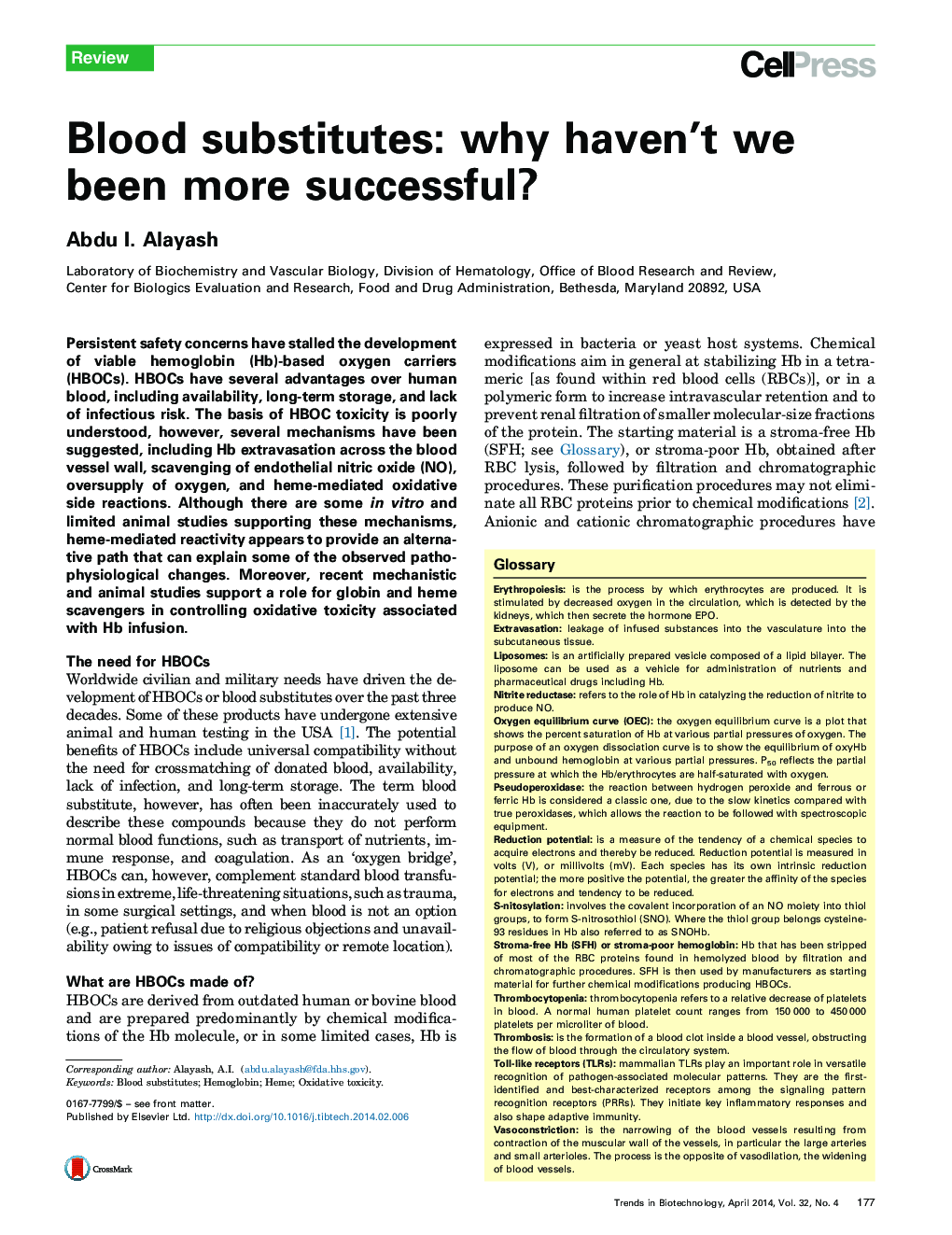| Article ID | Journal | Published Year | Pages | File Type |
|---|---|---|---|---|
| 37155 | Trends in Biotechnology | 2014 | 9 Pages |
•HBOC therapeutics are intended to correct oxygen deficit.•Safety concerns slowed the development of these life-saving products.•Evidence is presented to show the dominance of oxidative toxicity.•Protein re-engineering and/or the use of antioxidants can control toxicity.
Persistent safety concerns have stalled the development of viable hemoglobin (Hb)-based oxygen carriers (HBOCs). HBOCs have several advantages over human blood, including availability, long-term storage, and lack of infectious risk. The basis of HBOC toxicity is poorly understood, however, several mechanisms have been suggested, including Hb extravasation across the blood vessel wall, scavenging of endothelial nitric oxide (NO), oversupply of oxygen, and heme-mediated oxidative side reactions. Although there are some in vitro and limited animal studies supporting these mechanisms, heme-mediated reactivity appears to provide an alternative path that can explain some of the observed pathophysiological changes. Moreover, recent mechanistic and animal studies support a role for globin and heme scavengers in controlling oxidative toxicity associated with Hb infusion.
